|
Theatres
One of
the most successful theatres in Dudley
was the Dudley Opera House and its
successor, the Hippodrome. Dudley Opera House
on Castle Hill was built on land that had been
purchased from the Earl of Dudley by
John Maurice Clement and was designed by
A. Ramsell. It was built by a local
building firm, J. H. Whittaker & Company
and took 2 years to complete. The
foundation stone was laid by the Mayor
of Dudley on the 27th June, 1898. The
building, which could seat up to 2,000
people, cost £16,000 to build. It opened
on the 4th September, 1899 with a
performance of the Mikado, by the D’Oyly
Carte Repertory Company. John Maurice
Clement was also a theatrical agent and
owned musical instrument shops in
Dudley, Wednesbury and West Bromwich,
which sold tickets for the shows.
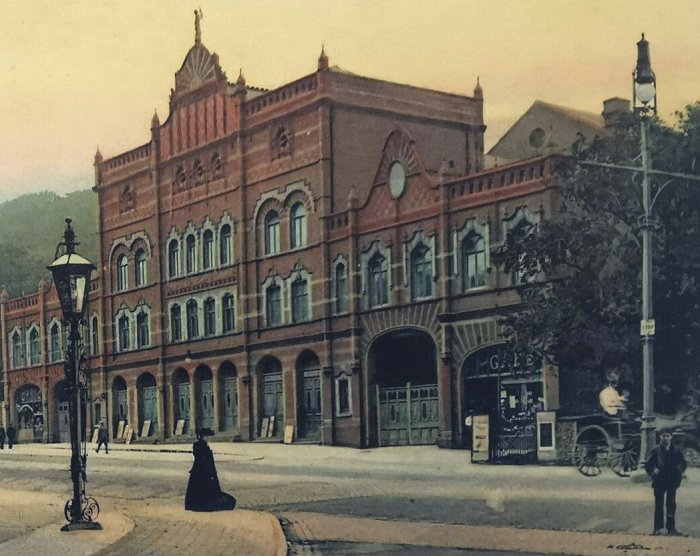
Dudley Opera
House. From an old postcard.
Many well-known
people appeared at the theatre including
Charlie Chaplin, in 1906, and a young
Stan Laurel in 1908. Mr. Clement died
from bronchitis, on the 24th February,
1912, at the age of 71, in his home in
Himley Road.
The
venue was very popular and was acquired
by The Dudley Opera House Company
Limited, run by Edward Baring. It was
then called the Dudley Opera House and
Hippodrome, and put on operas, plays,
dramas and music hall acts. In 1920 it
was acquired by Benjamin Kennedy, an
impresario, and his son Robert Kennedy.
There was little demand for opera so the
theatre relied on popular variety acts.
The theatre was extremely successful
until disaster struck on Sunday the 31st
October, 1936, when it was destroyed in
a huge
fire. The building had to be quickly
demolished because it was unsafe.
Dudley
Hippodrome
Ten months later,
work began on a replacement theatre,
Dudley Hippodrome. The architect was
Archibald Hurley Robinson who had
designed the adjacent Plaza Cinema. It
was built by A. J. Crump & Company
Limited and used Baggeridge bricks. The
theatre could seat just over 1,750
people.
Benjamin Kennedy
and his son Robert, ran the theatre,
which opened on the
19th December, 1938 with a performance
by Jack Hylton and his band along with
several variety acts. Large crowds gathered in the hope of
buying tickets. On the 23rd December,
Jack Hylton presented a live radio show
from the theatre. Sadly Benjamin Kennedy
died on the 10th April, 1939 and the
theatre was then managed by his two
sons, Robert and Maurice.
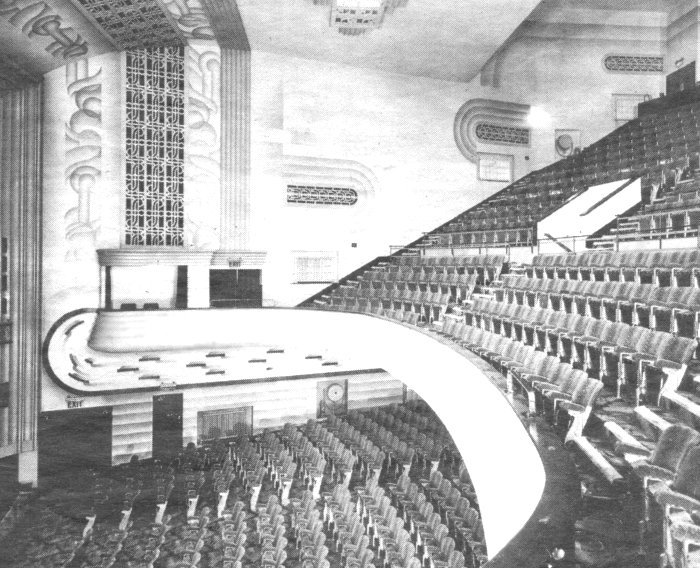
The Hippodrome's
once impressive Art Deco interior.
Success continued
and many of the popular performers of the
day appeared there, including Gracie
Fields, Flanagan & Allen, Max Miller,
Vera Lynn, Tony Hancock, Jon Pertwee,
Beryl Reid, Ken Dodd, Mr. Pastry, Old
Mother Riley, Tommy Cooper, Max Wall and
Tommy Trinder. In the 1950s and 1960s,
appearances were made by most of the
popular singers at the time, including
Alma Cogan, Frankie Vaughan, Tommy
Steele, Johnny Ray, Billy Fury, Joe
Brown and the Bruvvers, Gerry and the Pacemakers, The
Rolling Stones, Paul Anka and Roy
Orbison. It was one of the main theatres
in the area. The Station Hotel across the
road also greatly benefitted because
many of the stars stayed there in
between performances.
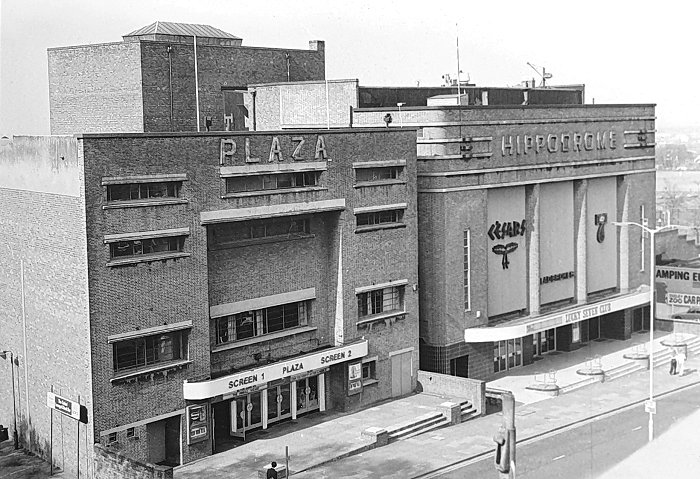
The Hippodrome and the Plaza
Cinema.
The final live
performance at the theatre was given by
the brilliant Roy Orbison, in August
1974. The theatre then became a bingo
hall, called Gala Bingo. At the time,
bingo was extremely popular, but by the
turn of the century its appeal had almost
gone. Gala Bingo closed on the 19th
September, 2009 and the theatre was put
up for auction, but failed to reach the
reserve price of £500,000. Since that
time it has been threatened with
demolition, in spite of its significance
to many local people. A number of people
have attempted to save the iconic
building, but it has been let down by
Dudley Council, English Heritage and a
number of local organisations, who will
be happy to see it go. To make matters
worse, the building has been vandalised
and much has been stolen, so it would
take a lot of money to restore it to its
former glory. It is a sad end to a
once-important local landmark, the like
of which will not be seen again.
|
|
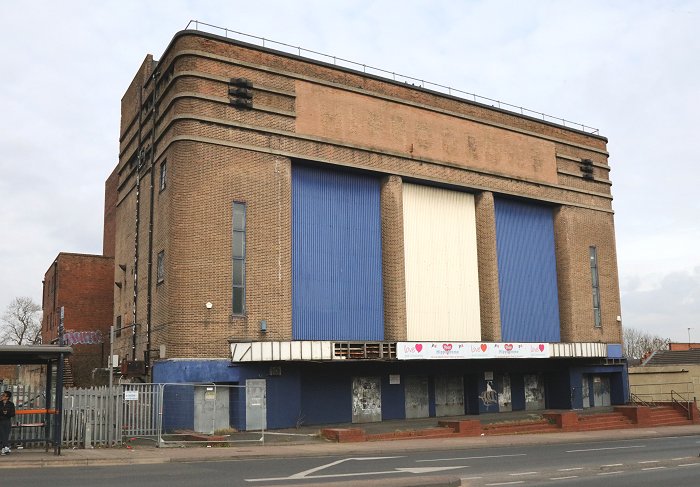
The Hippodrome in 2016. |
|
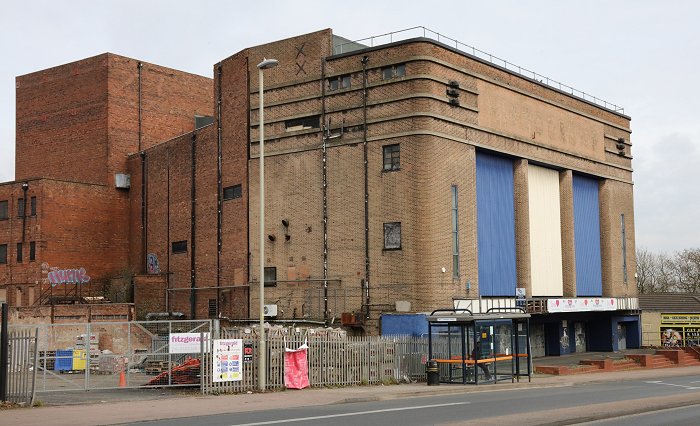
Another view of the Hippodrome
in 2016. |
|
Cinemas
The cinema was
probably the most popular form of
entertainment in the 1930s. Silent films
had been shown since the beginning of
the century, but from the end of the
1920s people were attracted to the new
talkies. The attraction of seeing
Hollywood film stars such as Errol
Flynn, Greta Garbo and Clark Gable,
along with low admission charges and the
growth of new luxury cinemas, made them a
great attraction.
|
|
The Mechanics
Institute
As early as 1895,
films were shown to an audience in the
Mechanics Institute, that stood on the
southern side of Wolverhampton Street
and on the western side of The Inhedge,
where the Job Centre is today in
Alexander House.
The films were shown in
a presentation called “Living Pictures”. The Mechanics
Institute was built in 1860 to help to
self-educate working people. It had a
library with a reading room and
classrooms, where chemistry, French and
German were taught. It also housed
Dudley’s geological collection that
later moved to the museum in St James’s Road.
Films were
regularly shown there after the passing
of the Cinematograph Act. Professor Wood
who soon moved to Bilston, presented a
“Musical and Pictorial Combination”
during Christmas 1909.
On the 31st
January, 1910 it became a cinema run by
Irving Bosco, who had a cinema in West
Bromwich. The Mechanics Institute was
then called The Public Hall. Films were
shown twice nightly to an audience of up
to 800 people and were very popular.
Edwin Griffiths took over in 1922 but
his application for a licence was
refused. In November, 1922 the building
reopened as a dance hall. |
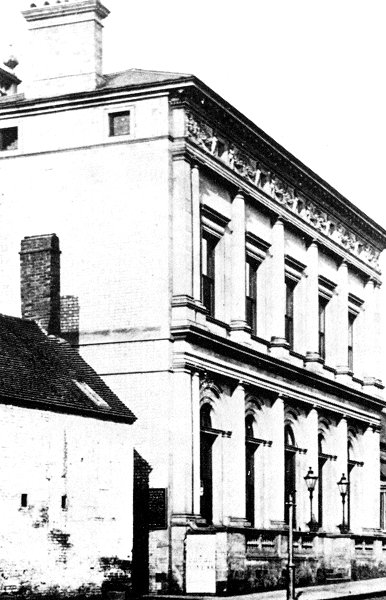
The Mechanics Institute. |
|
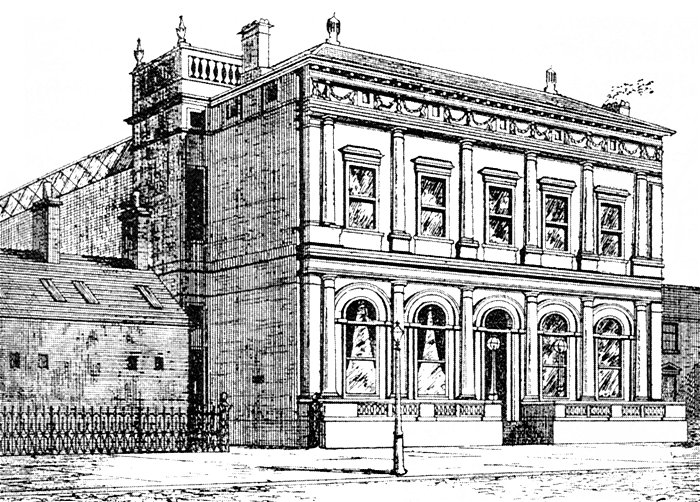
The Mechanics Institute. |
|
The Colosseum
John Maurice
Clement, who ran the Opera House on
Castle Hill, opened a cinema next door
called The Colosseum on the 24th
December, 1910. It had an ornate brick
façade that matched the Opera House, but
the building behind was a cheap
corrugated and cast iron structure with 500
seats on a flat floor. Films were shown
twice nightly at seven and nine o’clock.
It closed for a while in 1911 and the
licence was renewed in 1912.
Unfortunately Mr. Clement died in
February 1912 and the cinema closed
again.
It was taken over
by George Lovatt from Wolverhampton and
reopened on the 15th December, 1913 as
The Gem. It claimed to be the cosiest
and prettiest picture house in Dudley.
The cinema changed hands again when it
was acquired by John Nisbet, and yet
again when it was acquired by Mr.
Cranston, in October 1916. The cinema
reopened on the on 2nd December, 1916
under the name of The John Bull. The
first film was "Infidelity", starring
the American silent film star, Theda
Bara.
It changed hands
again in 1918 when Ernest Davies, a
local auctioneer and estate agent, took
over and changed its name to the Scala.
It continued to change hands in the
1920s. For a time it was run by Walter
McMillan, who also opened the Castle
Cinema at the old Temperance Institute
in High Street.
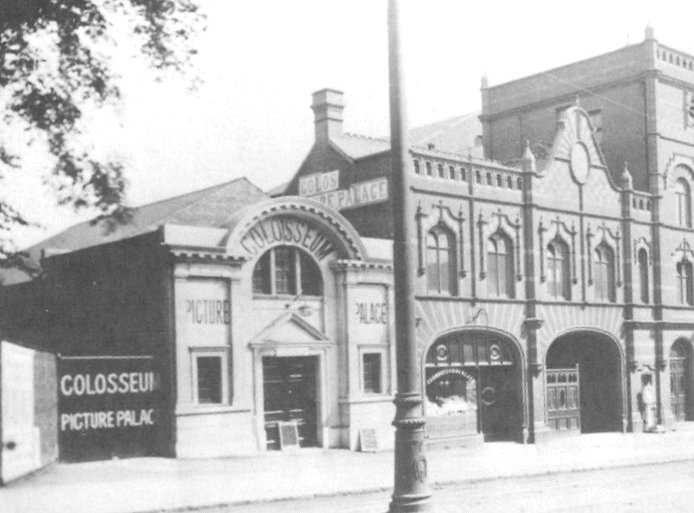
The Colosseum.
The Plaza
In 1931 the Scala
was acquired by Benjamin Kennedy who had
been running the Opera House next door
since 1920. He renamed it, the Plaza.
After a few years
it was demolished to make way for a new
impressive cinema, also called the
Plaza. The new cinema was designed by
Mr. Hurley Robinson and built by Parsons
and Morrin Limited, of Edgbaston. It had
a splendid interior and could seat 1,500
people and had excellent acoustics, with sound produced by Western Electric
equipment. It opened on Thursday the
28th May, 1936, with a showing of "Top
Hat" starring Fred Astaire and Ginger
Rogers.
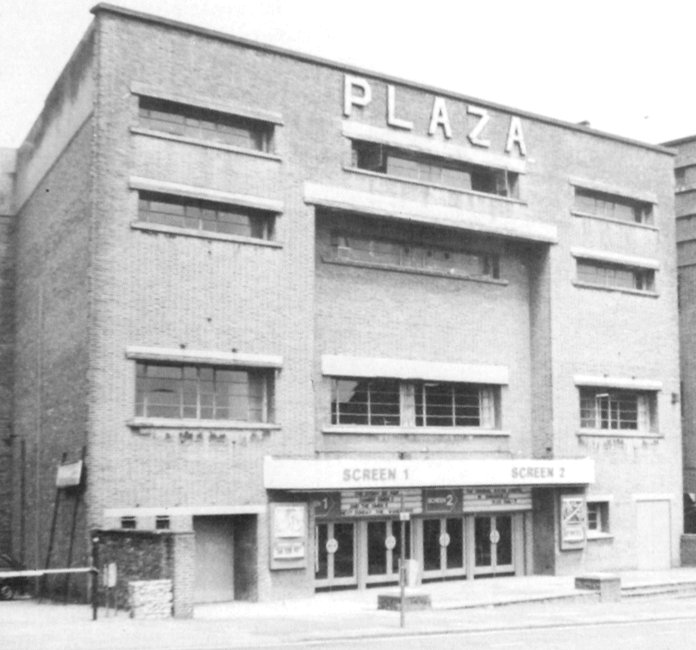
The Plaza.
Benjamin Kennedy
died on the 10th April, 1939 and the
Plaza was then run by his two sons,
Robert and Maurice, who continued to run
the cinema until the 1950s. In 1954,
Miles Jervis acquired the Plaza from the
trustees of the late Benjamin Kennedy's
estate and installed cinemascope, which
was extremely popular. He opened the
cinema on the 14th June, 1954 with a
showing of ''The Robe", staring Richard
Burton, Jean Simmons and Victor Mature.
It was extremely successful and
attracted a large number of people.
The cinema was
acquired by Gaumont British in the
autumn of 1955 and became part of the
Rank Organisation. A second screen was
added in 1973. The cinema opened with
two screens on Sunday the 29th April,
1973. The larger auditorium could seat
551 people, whereas the smaller one
seated an audience of 199. The Plaza was
Dudley’s last surviving cinema when it
closed in 1990. It was demolished in
1997.
The Criterion
The Criterion in
High Street was founded in the Criterion
Vaults, a public house on the south side
of High Street, facing Stone Street. The
pub specialised in music hall acts until
1911 when it got a licence to show films. It could seat 253 people in
cramped conditions and opened on the
27th February, 1911. Seats cost 3d and
6d.
|
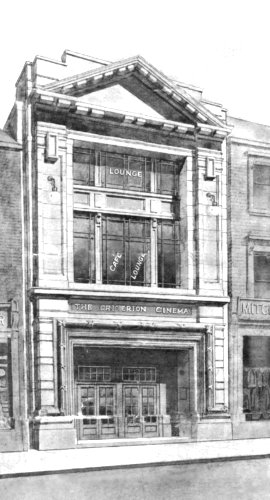 |
|
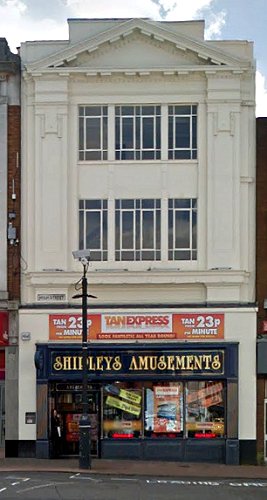 |
|
The Criterion Cinema. In its heyday and
as it is today. |
|
|
In 1913 the pub
closed and it became just a cinema. It
was extended at the rear to seat 570
people
In 1915 it was
taken over by Sidney Bray, who also had
cinemas in Brownhills, Halesowen,
Stourbridge and Langley. He decided to
replace the old cinema with a fine new
building, having a large auditorium,
with a balcony and a café. He formed a
limited company, Criterion Picture House
(Dudley) Limited to raise the necessary
capital for the project. By the autumn
of 1922, £40,000 had been raised and
work began. The building was designed by
Joseph Lawden, of Birmingham, and Howard
Cetti of Dudley, and could seat 1,200
people in luxurious surroundings. The
café, which had an American soda
fountain, opened daily from 10 am. to 10
pm.
|
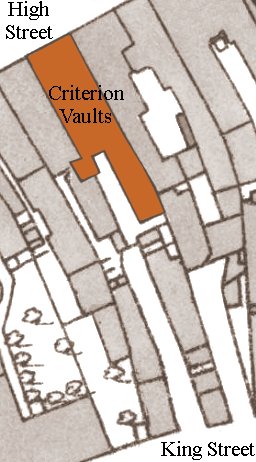 |
|
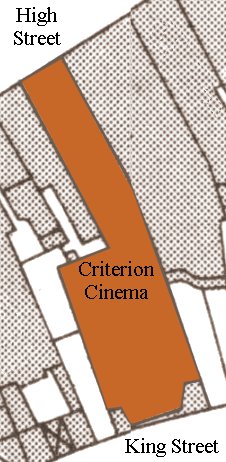 |
|
The original
building. |
|
The extended
cinema. |
|
| The Criterion cinema re-opened on the
17th November, 1923 with a showing of
"Hearts Aflame", starring Frank Keenan,
Anna Q. Nilsson, and Craig Ward. In
December 1927 the cinema was taken over
by Provincial Cinematograph Theatres,
which in turn was taken over by Gaumont
British Theatres in February 1929. Sound
equipment was installed in 1929 and the
cinema presented its first ‘talkie’,
“The Glad Rag Doll” starring Dolores
Costello on the 11th November, 1929. In 1941, the Rank Organisation took
over Gaumont British Theatres and by the
1950s they ran most of the cinemas in
Dudley, including the Gaumont, the
Odeon and the Plaza. The organisation
threatened to close cinemas if the
government refused to abolish
entertainment tax and began by closing
their oldest cinemas in areas where they
had a monopoly. The Criterion was one of
the victims and closed on the 29th
September, 1956 with a showing of "Reach
for the Sky" starring Kenneth More.
The building was sold to Broadmead, a
retailer of electrical goods. The
auditorium at the back was demolished in
about 1980 and the site is now occupied
by Demons Bar and Gentleman’s Club, in
King Street. The front part of the
cinema now houses Shipleys Amusements
store, in High Street, which faces the
end of Stone Street.
|
| The Empire The Empire, in Hall Street, on the corner of
Dudley Row, started life as a music hall. It was
opened on the 6th May, 1903 by the famous music hall
star and comedian, Dan Leno. The theatre was
designed by local architect, Arthur Gammage and
owned by Tom Prichard. It seated 1,100 in the stalls
and 900 in a steeply raked balcony.
On the 1st January, 1910, Irving Bosco who had
previously opened the first cinema in the Black
Country at West Bromwich, obtained a cinema licence
for the Empire, where films were shown by a number
of people. It became a full-time cinema in January,
1912 and on the 8th April, Irving Bosco, took it
over and appointed Bert Dawes as manager. The cinema
initially became known as Bosco’s Picture Pavilion,
but in 1919 it became the Empire Cinema.
|
|
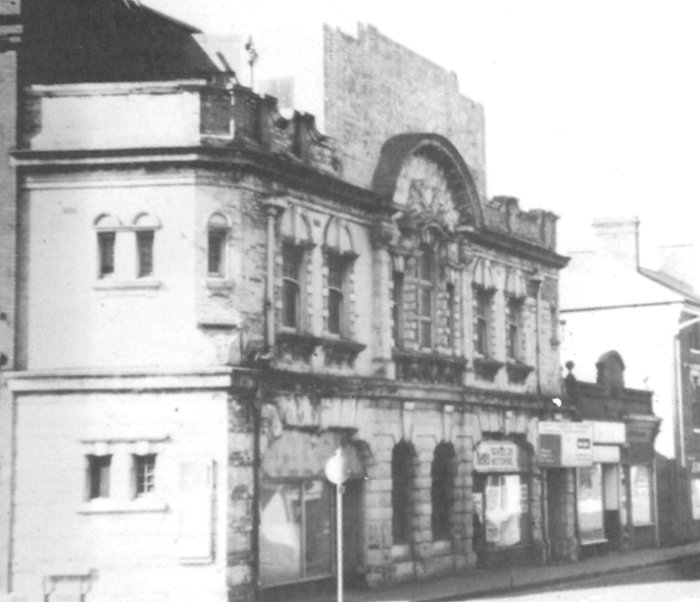
The Empire in Hall Street,
with Dudley Row on the left. |
| It changed hands again at the end of 1920 to
become part of a Nottingham-based syndicate led by
E. C. Shapeero, then again, when it was acquired by
Denman Picture Houses, a subsidiary of Gaumont-British.
Sound equipment was installed, but it closed on the
2nd November, 1940 with a showing of “Let George Do
It”, starring George Formby. It was initially used
as a Home Guard training centre and then a factory
and warehouse, run by the local engineering firm,
Herman Smith. It was demolished in 1975 and the site
is now part of the Cousins furniture store.
The Odeon
The Odeon cinema on Castle Hill was the last
cinema to be built in the centre of Dudley. It was
designed by the Harry Weedon office in Art Deco
style and built by Housing Limited, of Blackheath.
The auditorium could seat 1,234 people in the stalls
and 642 on the balcony. It opened on the 28th July,
1937 with a showing of “Beloved Enemy” starring
Merle Oberon. The first manager was Charles Crathorn,
who became a celebrity on radio and TV.
|
|
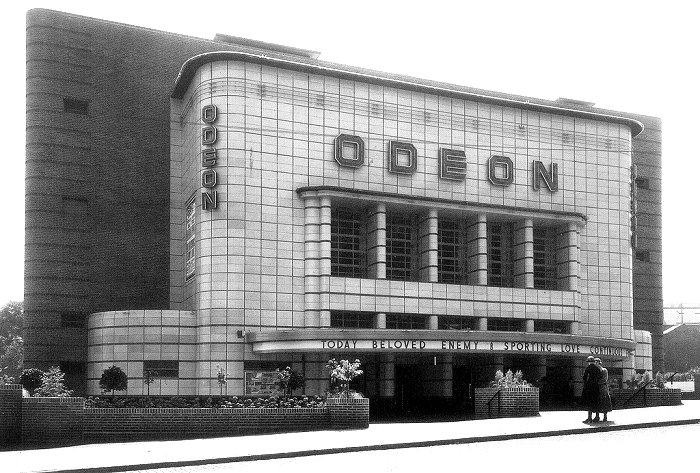
The Odeon in its heyday. |
|
It was well attended and became Dudley’s leading
cinema. New projectors were installed at the end of
1952, followed by cinemascope. It continued to
attract large audiences and had a Saturday Morning
Club, with 800 members. It closed on the 22nd
February, 1975 with a showing of the musical
"Oliver", starring Ron Moody.
The owners, the Rank Organisation, applied to the
council for permission to demolish the building, but
this was refused. It was sold to the International
Bible Students Association and by 1977 was in use as
a church. It was then purchased by the Jehovah's
Witnesses and became Kingdom Hall. On the 5th
October, 2000 it was Grade II listed as being an
almost complete example of typical Odeon cinema of
the 1930s.
|
|
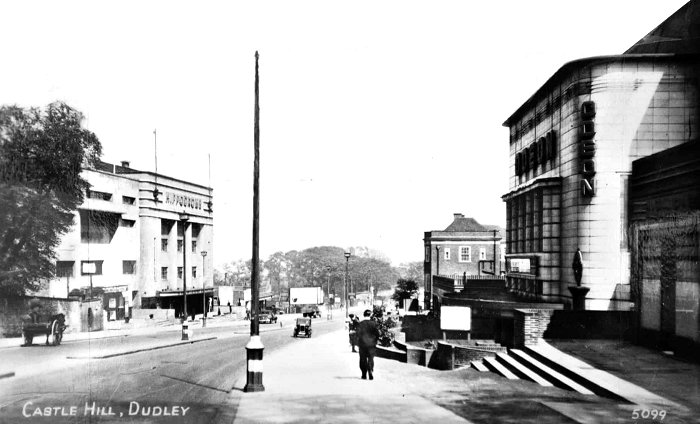
The two cinemas and the
theatre on Castle Hill. |
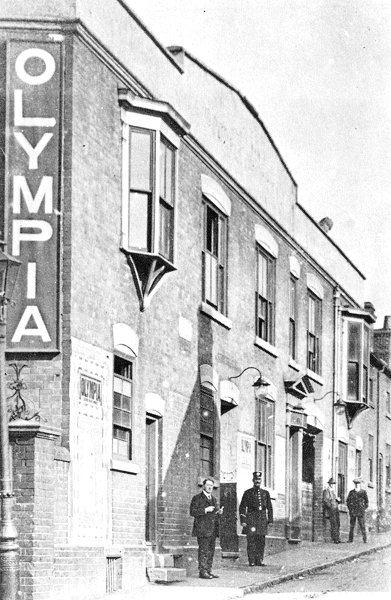 |
The Olympia Cinema in
Wordsley, known locally as the 'Lymp'.
It opened in 1912 and was
later bought by Anthony Bailey, who is seen
standing in front of the building.
He also owned the
Wordsley Brewery but had to sell the cinema in
1923 because of ill health. |
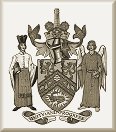 |
Return to the
previous page |
|